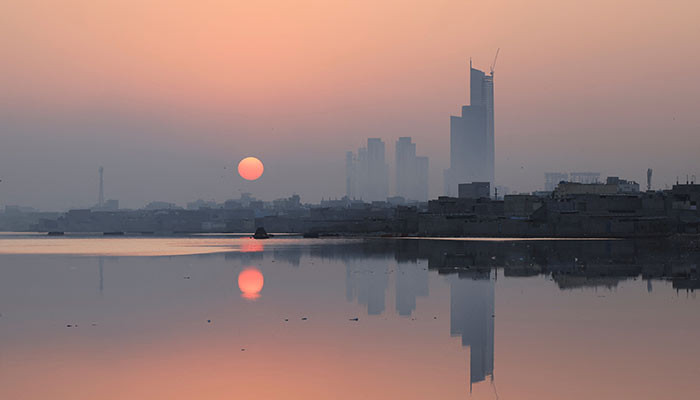Business
SMOKERS’ CORNER: THE EVOLUTION OF PARTIES
字号+ Author:Smart News Source:Travel 2025-01-12 00:03:52 I want to comment(0)
A party hoping to establish itself in the mainstream may evolve from the left or from the right. But the evolution is almost always towards finding a place in the centre. The centre in this regard is largely driven by a fluid pragmatism, rather than by a fixed ideology. This is where the terms centre-left and centre-right come from. Sometimes, though, parties may jump to a whole new position. For example, a party may evolve from the right, establish itself in the centre, and then gradually start to move to the left. For example, till the early 1930s, the Democratic Party (DP) in the US was largely a centre-right outfit. Due to the US stock market crash of 1929 and the severe economic depression that followed, the party began to move slightly to the left because the economic depression became synonymous with the Republican Party (RP). The RP was the party in power during the 1929 crash. The RP had started off from a ‘centrist’ position, which it had adopted just before and during the American Civil War. But hostile electoral reactions (especially in the South) against race-related political and economic reforms, initiated by the RP after the war, saw the party gradually move to the right. Across history, political parties have had to learn to balance their incipient ideology with pragmatism in order to ensure mainstream appeal and survival. The Pakistan Tehreek-i-Insaf also requires, perhaps, a similar recalibration In the 1930s, the DP continued to move to the left under President Franklin D Roosevelt, as he launched large-scale economic reforms to tackle the impact of the depression — so much so that many of his opponents started to accuse him of being a socialist/ communist. Indeed, Roosevelt’s reforms went a long way in turning the US into a welfare state of sorts; but his policies also saved American capitalism, which had crumbled in 1929. During the Roosevelt presidency, circumstances such as an economic collapse, pushback from the courts and big businesses against his reforms, and the possibility of extreme groups grabbing power, saw the DP adopt some rather radical positions and policies. After 1945, the party eventually returned to its mainstream centrist position, but this time as a centre-left party. So, the DP became a centre-left/ left-liberal party and the RP became a centre-right outfit. Till the early 1970s, a consensus between the RP and the DP to retain most of Roosevelt’s reforms, held. But, a severe oil and economic crisis from 1973 onwards saw a gradual shift of the RP to the right. This slow shift greatly accelerated during the first Donald Trump presidency, almost to the point of becoming radical and, in some cases, even militant. Economists saw this as the latent effects of the 2008 economic recession. Many Americans blamed the DP for its ‘sympathetic’ attitude towards large banks and corporations. Separately, there are multiple examples of radical outfits moving (from left as well as right) towards a more pragmatist disposition, in a bid to become mainstream and viable electoral outfits. The once far-left and militant People’s Liberation Front in Sri Lanka became a mainstream party that only recently won the country’s presidential election. The Italian political party Brothers of Italy, which has roots in various militant far-right currents in Italy, successfully moulded itself into becoming a mainstream conservative party. It won Italy’s 2022 election. There are also cases in which circumstances pushed mainstream parties to abandon the pragmatic centre and race back to their more radical/ original left or right positions. The current government in Pakistan has often accused Imran Khan’s Pakistan Tehreek-i-Insaf (PTI) of being a ‘militant’ outfit rather than a political party. Indeed, since it was ousted from power in 2022, PTI has continuously indulged in confrontational politics through militant rhetoric and violent protests. It has gone to great lengths to pose as an ‘anti-establishment’ party. As a mainstream party that had evolved towards becoming a centre-right outfit when it won the 2018 election, PTI has tumbled back towards a more radical populist disposition; or a position that the party began with years ago. This has happened before. In 1967, the Pakistan Peoples Party (PPP) emerged as a populist left-wing party. Just before it won the 1970 elections (in the erstwhile West Pakistan), it had begun to shift more to the centre (centre-left). While in government (1971-77), it shifted slightly to the right to co-opt society’s own shift to the right. But things began to change when PPP’s government was toppled in 1977 in a reactionary military coup. This threatened the very existence of the party. Consequently, it began to move back to its original populist left position and towards politics of confrontation. From 1977 till Benazir Bhutto’s return from exile in 1986, hundreds of party workers were jailed and many lost their lives. Sensing that the US would not be willing to sustain the military regime anymore due to changing geopolitical circumstances, and the fact that the supporters of the regime had created a strong constituency for themselves in PPP’s stronghold in Punjab, Benazir began to move the party away from radical politics towards a more pragmatic disposition. By the time of the 1988 elections, the PPP had become a ‘left-liberal’ party. It has continued to move towards the centre to secure its mainstream reach. PTI, on the other hand, may still attract votes due to its current strand of politics. But it is never easy to sustain the ‘emotional vote’ for long, because it eventually exhausts itself and, more so, is problematic for a powerful, hands-on establishment. Some leaders within the PTI have already realised this and are hoping for the jailed party chairman to do what Benazir did: pull back the party towards a more centrist position, so it can start seeming more agreeable to the powers that be and not burn out. This is the term (“burn out”) that Benazir used in a 1992 interview with me when I asked why she began to soften the party position in 1986-87. To paraphrase her, she said that the party was in danger of burning out and had lost many workers. She then added, “Our emotions were spent” and that “the US was watching us closely.” To her, there was no possibility for a change without first addressing the concerns of the establishment. She concluded by saying, “We had to look like a party with a practical plan. It is this that helped us survive as a party.” Imran Khan too must realise that political manoeuvres are planned according to an objective understanding of circumstances. Not according to one’s ego or reactive whims.
1.This site adheres to industry standards, and any reposted articles will clearly indicate the author and source;
 Related Articles
Related Articles-
نیوکاسل کے اساک اور جوئلینٹون نے مانچسٹر یونائیٹڈ کو مسلسل چوتھی شکست سے دوچار کیا۔
2025-01-11 23:51
-
پی پی پی نے مسلم لیگ (ن) کی قیادت میں قائم حکومت کو خبردار کیا ہے کہ اگر وہ اپنی حمایت واپس لیتی ہے تو حکومت گر جائے گی۔
2025-01-11 23:26
-
طویل блокаڈ کے بعد آج طل سے کرم کی جانب طبی امداد کا قافلہ روانہ ہوا۔
2025-01-11 23:10
-
عدالت نے پولیس کو KP کے وزیر اعلیٰ گنڈا پور کو گرفتار کرنے کا حکم دیا ہے۔
2025-01-11 21:34
 User Reviews
User Reviews Recommended Reads
Recommended Reads Hot Information
Hot Information- کرِسٹینو رونالڈو نے وینیسیئس جونیئر کو نظر انداز کرنے پر بالون ڈی اور کی مذمت کی
- انسدادِ احتساب نے عمران خان کی نئی توشہ خانہ کیس میں ضمانت کی درخواست پر تفصیلی فیصلہ جاری کر دیا۔
- پاکستان اور متحدہ عرب امارات نے باہمی تعاون کو فروغ دینے کے عزم کا اعادہ کیا۔
- ازبکستان نے کراچی کے لیے براہ راست پروازوں کے آغاز کا اعلان کیا ہے۔
- ماسکو، کیئف نے یوکرین کے ذریعے یورپ کو روس کی گیس کی ترسیل کا خاتمہ کر دیا۔
- اکاؤنٹیبلٹی کورٹ 13 جنوری کو 19 کروڑ پونڈ کے کیس کا فیصلہ سنائے گا۔
- لکی مروت میں دہشت گردوں نے دو پولیس اہلکاروں کو شہید کر دیا
- پی پی پی نے مسلم لیگ (ن) کی قیادت میں قائم حکومت کو خبردار کیا ہے کہ اگر وہ اپنی حمایت واپس لیتی ہے تو حکومت گر جائے گی۔
- اپیل عدالت نے ٹرمپ کے جنسی زیادتی کے کیس میں فیصلے کو برقرار رکھا ہے۔
 Abont US
Abont US
Follow our WhatasApp account to stay updated with the latest exciting content













